Crowberry
This evergreen member of the Ericaceae or Heather family has edible berries that can be found from summer and can last well into winter or even spring and stay edible. They don’t have the strongest of flavours but are better when cooked with or dried.
| Hedgerow Type | |
| Common Names | Crowberry, Crowberry, Crawberry, Crawcrooks, Lingberry, Deer's Grass |
| Scientific Name | Empetrum nigrum |
| Season Start | Jun |
| Season End | Apr |
Leaves
The leaves are small, short, fleshy, almost succulent and glossy. They grow in large numbers spiralling along the stringy stems. Small pink five petalled flowers grow from between the leaves in spring and early summer.
Fruit
The fruits look a little like small Bilberries that grow in clusters along the stem. They start pink before turning red then to black and can persist on the plant from early summer well into winter and even spring.
Possible Confusion
Can look a little like Bilberries, pictured, but the lack of ‘cogwheel’ and very different leaves should save confusion although these two plants will happily grow with each other in the same environment.
The leaves could be confused with some of the Stonecrops but these don’t have black berries growing along the stem.
Taste
The berries have a subtle taste and are best dried or cooked with other fruit.
Frequency
Common in upland areas of moor and acidic soil around the UK.
Other Facts
The berries are high in anthocyanin and have been used as a dye for foods.



 (7 votes, average: 3.86 out of 5)
(7 votes, average: 3.86 out of 5)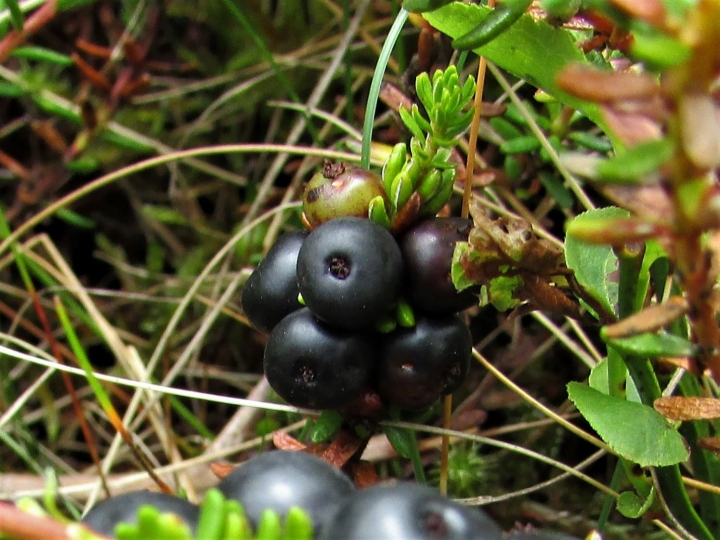
















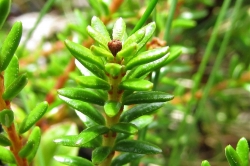
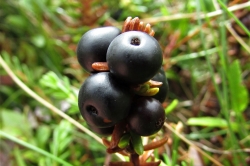
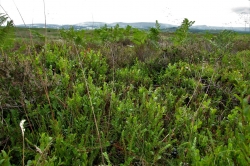
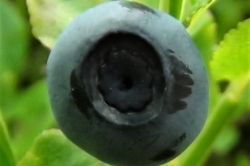





COMMENTS